Authentic Period Civil War Medical Items 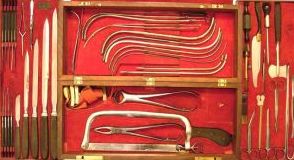 Civil War Surgical Sets Medical Text Books and Surgical Manuals Articles on Civil War Medicine See our Articles On Civil War Medicine |
An
Elementary Treatise
on
Human Anatomy
by Joseph Leidy
Published by J.B. Lippincott, Philadelphia, 1861
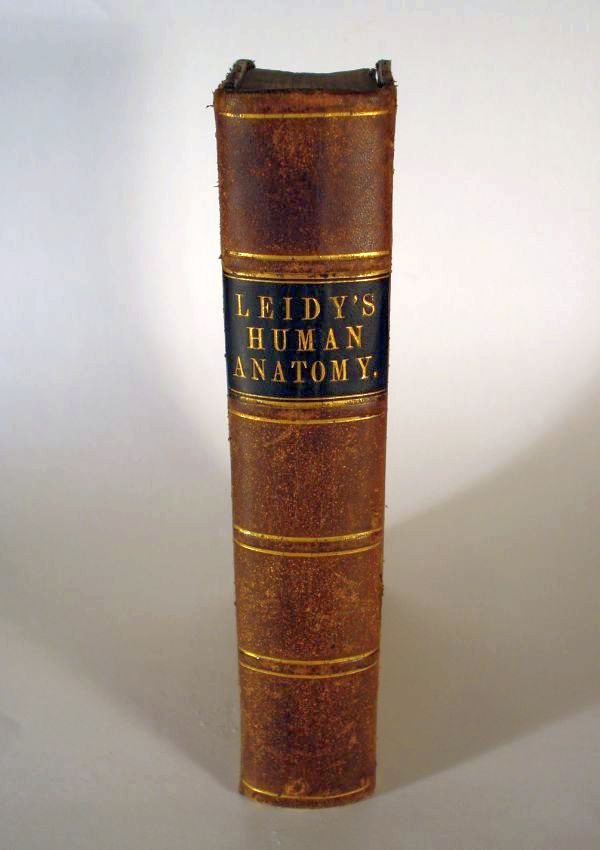
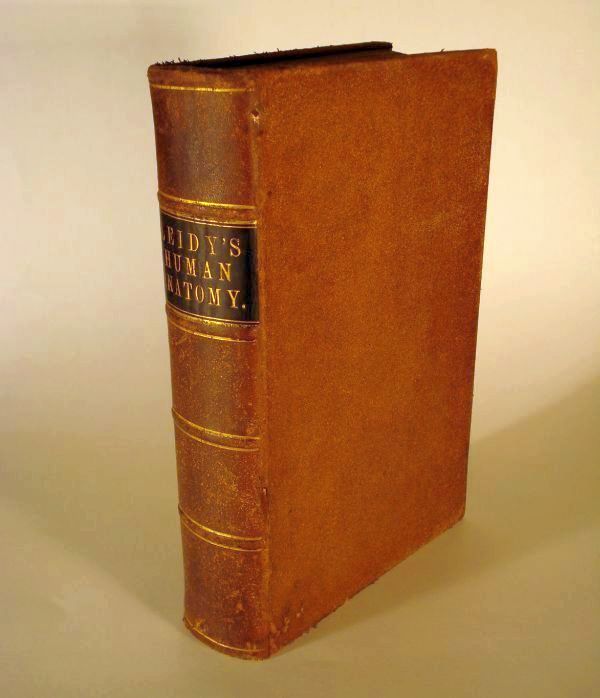
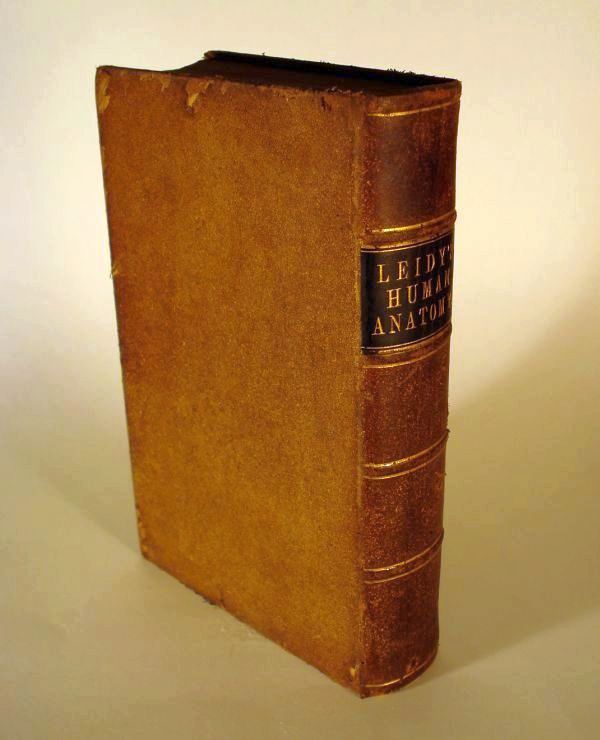
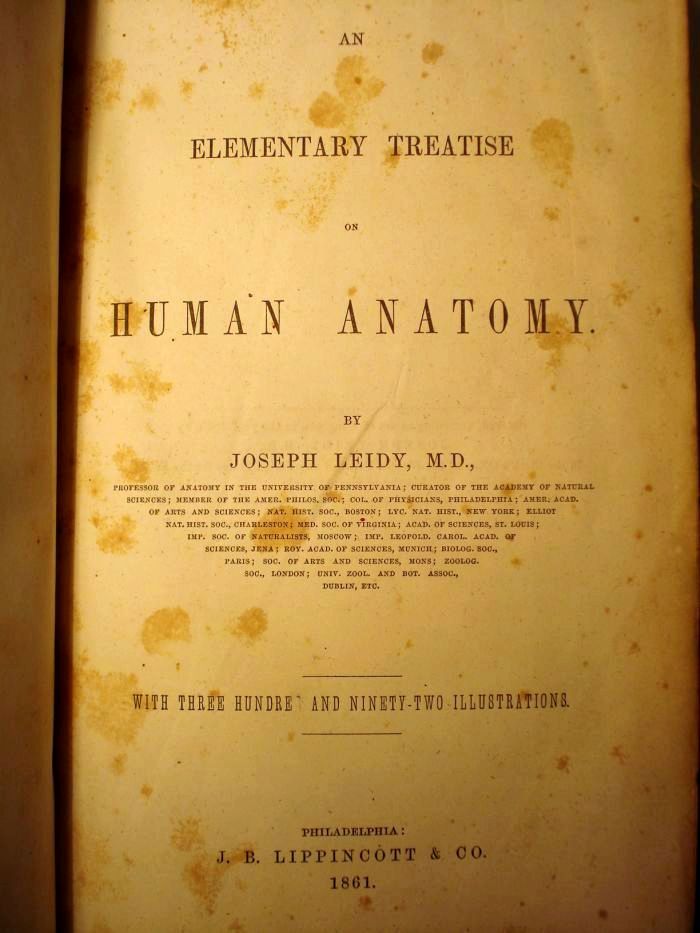
When Joseph Leidy started his career in 1845, scientific research was dominated by gentlemen amateurs and wealthy collectors. By the end of his life, science in the United States had become increasingly professionalized and specialized. Leidy straddled these two worlds. He was an acclaimed researcher, but his income came primarily from teaching and an assortment of administrative duties. Unlike the specialized scientists of the late 19th Century, however, he had expertise in and made significant contributions to a wide range of subjects. To borrow the apt subtitle of Leonard Warren's recent biography (1), Leidy was "the last man who knew everything."
Known as the "Father of American Vertebrate Paleontology", Leidy described the first relatively complete dinosaur skeleton, Hadrosaurus, and introduced many American and European scientists to the fossil riches of the American West. Leidy's consummate skill in comparative anatomy would allow him to identify and characterize even the most fragmentary fossil material.
Leidy was also the "Founder of American Parasitology," a Professor of Anatomy at the University of Pennsylvania, a pioneering protozoologists, an influential teacher of Natural History, an accomplished microscopist and scientific illustrator, and an expert on a variety of subjects encompasing the earth and natural sciences. He published scientific papers on more than a thousand extinct and living protozoa, fungi and invertebrates and vertebrates as well as an assortment of publications on human biology and medicine. He was also one of the earliest supporters of Charles Darwin.
Leidy was a passionate advocate of employing the microscope in scientific research. He was first introduced to the tool by his medical school mentor, Dr. Paul Goddard and he emphasized its usefulness to his own students. In his research Leidy used the microscope to examine a wide range of subjects, including fossils, gems, parasites, forensic medicine and human tissues. Notable among his microscopic studies are his 1848 study on the microstructure of the liver, his 1853 parasitology monograph ("Flora and Fauna within Living Animals"), his 1879 protozoology monograph ("Fresh-Water Rhizopods of North America") and his study of endosymbionts in termites ("The Parasites of the Termites").
Leidy's use of the microscope also yielded findings that had public health implications. His examination of parasite cysts in cooked ham led him to advocate the thorough cooking of meat to prevent infection by harmful parasites. Examinations of microorganisms in housefly mouthparts led him to conclude that they were carriers of disease and led him to he advocate measures to reduce their presence in hospitals. Leidy's microscopic studies also allowed him to debunk a popular theory that various respiratory diseases (including asthma and hay fever) were caused by an infusorian, Asthmatos ciliaris. He reported that the suspected agent of disease was simply tissue debris from the mucus of patients.
Leidy's expertise in a wide range of subjects led many people to seek him for assistance. Doctors would approach him with difficult diagnoses, collectors would seek him when they had unusual specimens, and dealers and jeweler sought him to authenticate their gems.
One striking example of Leidy-as-expert occurred in 1862. Leidy was asked by the Philadelphia City Council to investigate an insect infestation in the city's parks. A month later he submitted his report, which contained detailed descriptions of the five species he found, their life histories and remedies for controlling them. Once the word spread, Leidy began to receive queries on insect pests from around the country.
As stated before, Leidy was a professional scientist who's income came primarily from teaching and administrative duties. His scientific research, however, is his lasting legacy. It was also a central pleasure of his life. In the concluding remarks of his 1879 monograph, "Freshwater Rhizopods of North America" Leidy wrote:
"The study of natural history in the leisure of my life, since I was 14 years of age, has been to me a constant source of happiness; and my experience of it is such that independently of its higher merits, I warmly recommend it as a pastime, than which, I believe, no other can excel it".
Civil War Medical Books Antique Medical Books Civil War Medical Books Marked U.S.A. Hosp. Dept. Civil War Medical Books Marked U.S.A. Medical Department |
We are currently purchasing Civil War Medical items.
Contact us at civilwarmedicalbooks@gmail.com if you have items you would like to sell.
No portion of this website may be copied, retransmitted, reposted, duplicated or otherwise used without the express written approval of the author.